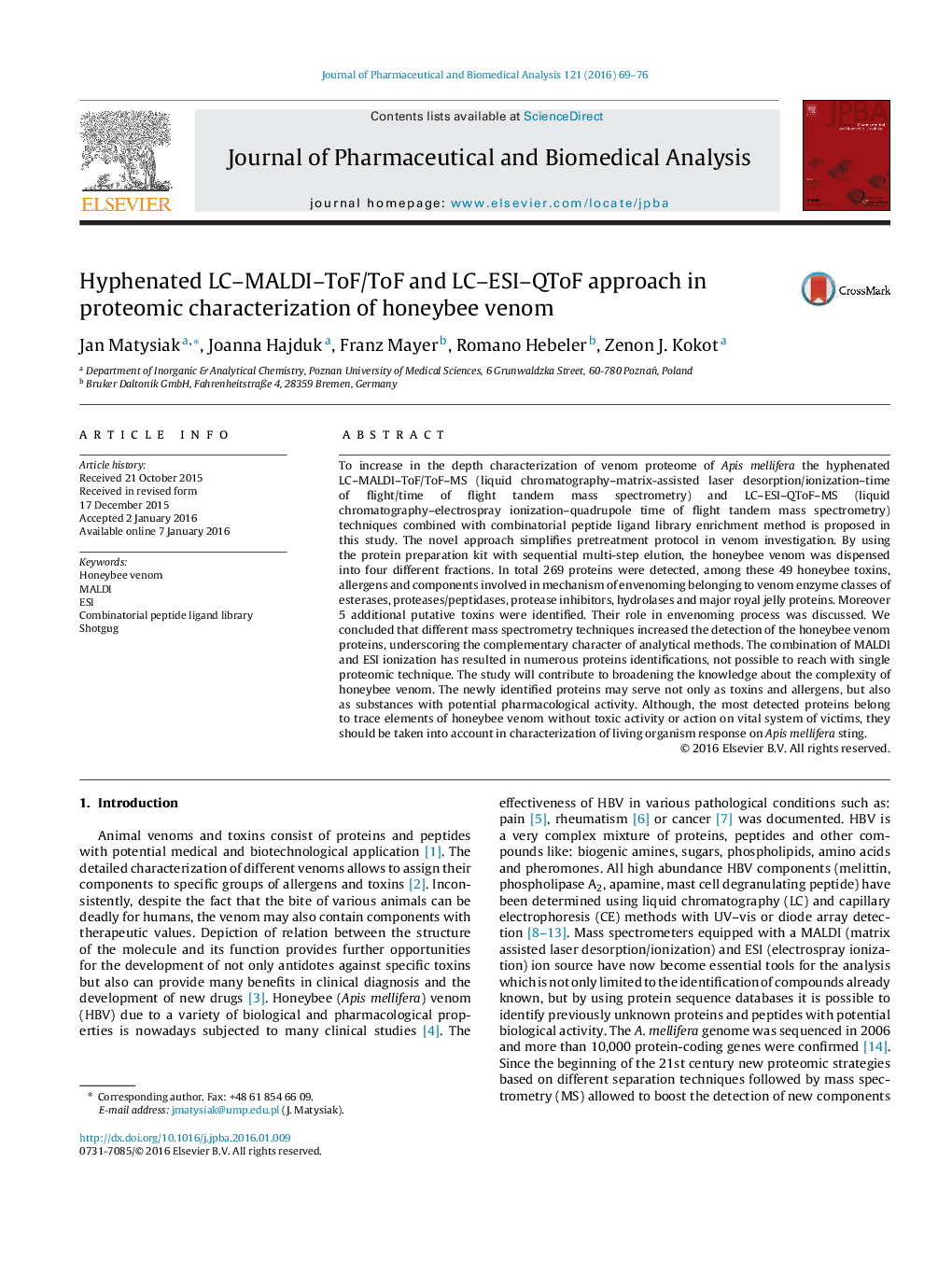| کد مقاله | کد نشریه | سال انتشار | مقاله انگلیسی | نسخه تمام متن |
|---|---|---|---|---|
| 1220942 | 1494614 | 2016 | 8 صفحه PDF | دانلود رایگان |

• The novel CPLL sequential fractionation of bee venom proteins was used.
• Combination of LC–MALDI–ToF/ToF & LC–ESI–QToF techniques was applied.
• In total 269 bee venom proteins were detected.
• 5 predicted constituents are potentially new toxic or allergic bee venom proteins.
• The results confirmed the complementary character of MALDI & ESI ionization methods.
To increase in the depth characterization of venom proteome of Apis mellifera the hyphenated LC–MALDI–ToF/ToF–MS (liquid chromatography–matrix-assisted laser desorption/ionization–time of flight/time of flight tandem mass spectrometry) and LC–ESI–QToF–MS (liquid chromatography–electrospray ionization–quadrupole time of flight tandem mass spectrometry) techniques combined with combinatorial peptide ligand library enrichment method is proposed in this study. The novel approach simplifies pretreatment protocol in venom investigation. By using the protein preparation kit with sequential multi-step elution, the honeybee venom was dispensed into four different fractions. In total 269 proteins were detected, among these 49 honeybee toxins, allergens and components involved in mechanism of envenoming belonging to venom enzyme classes of esterases, proteases/peptidases, protease inhibitors, hydrolases and major royal jelly proteins. Moreover 5 additional putative toxins were identified. Their role in envenoming process was discussed. We concluded that different mass spectrometry techniques increased the detection of the honeybee venom proteins, underscoring the complementary character of analytical methods. The combination of MALDI and ESI ionization has resulted in numerous proteins identifications, not possible to reach with single proteomic technique. The study will contribute to broadening the knowledge about the complexity of honeybee venom. The newly identified proteins may serve not only as toxins and allergens, but also as substances with potential pharmacological activity. Although, the most detected proteins belong to trace elements of honeybee venom without toxic activity or action on vital system of victims, they should be taken into account in characterization of living organism response on Apis mellifera sting.
Figure optionsDownload as PowerPoint slide
Journal: Journal of Pharmaceutical and Biomedical Analysis - Volume 121, 20 March 2016, Pages 69–76